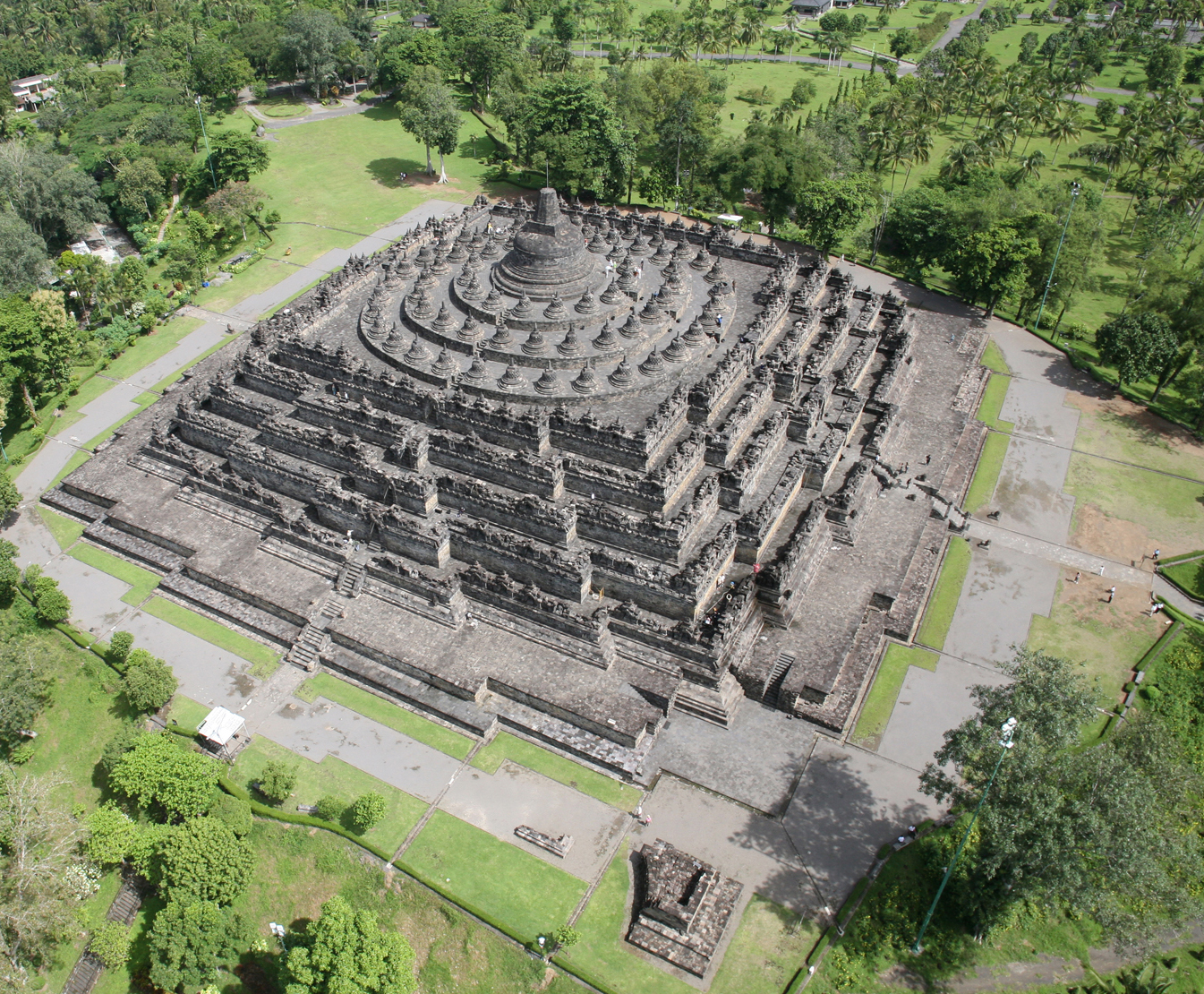Borobudur Temple in Indonesia

Borobudur is the name known to the largest and most magnificent Buddhist monument in the world. It is a giant artificial hill of stones, raised in a valley surrounded by volcanoes in the center of the island of Java, which is one of the masterpieces of architecture and sculpture of all time.
The pilgrim route has a high symbolic content, and proposes a path of perfection whose goal is nirvana or spiritual liberation.
Borobudur, a name deriving from an expression meaning «Mountain of accumulation of merits of the ten states of Bodhisattva» is commonly thought of as a Buddhist structure, yet its initial construction was planned and conducted by Hindu builders Sometime around 775 d. C.
It is inspired by a constructive module relates to sacred diagrams of Tantric Buddhism and respects a rigid geometric pattern that has deep religious significance.
It consists of concentric rings are narrowing as it rises to culminate in one great central stupa symbol of the Eternal Truth (the typical conical building of Buddhist architecture), symbolizing a lotus, the sacred flower of Buddha – floating on the waters of a placid lake (in this case the plain) or rather a mountain surrounded by water.

In order to get from the level of the plain to the nearly 40-meter-high central dome were built nine joint terraces, the first measured more than 170 feet on a side. If these grandiose dimensions are added meticulous care with which every detail was made, schematic transforming an idea into a stone lace, you can get an idea of the magnitude of the difficulty and importance of the work done in this temple .
And all this to draw a «route», or, in other words, to create a suitable path for a journey of the soul. For those who visit it is an invitation to meditation, which speaks directly to the senses and conveys your message.
It was restored between 1907 and 1911, groups of researchers and archaeologists Dutch who saved him from the threat of tropical vegetation, where most of the sculptures were lost during the course of these restorations and of them only know the subject : the Karmavibhaga, the law of karma, according to which every human action brings inevitable consequences in the afterlife.
Hundreds of these sculptures were a thorough description of hellish scenes (according to the conception of the builders), in which the man appeared still vilified and imprisoned by the whirlwind of desires. It is known also that they were in broad daylight, but half buried and hidden from view.
The sacred mountain represents the progressive abandonment, spiritualization and internalization. In short, the eternal journey from chaos to order, from matter to spirit, contradictions to the Truth. The journey faced Buddha first and still today, in your name, thousands of people face as shown and suggests Borobudur.
